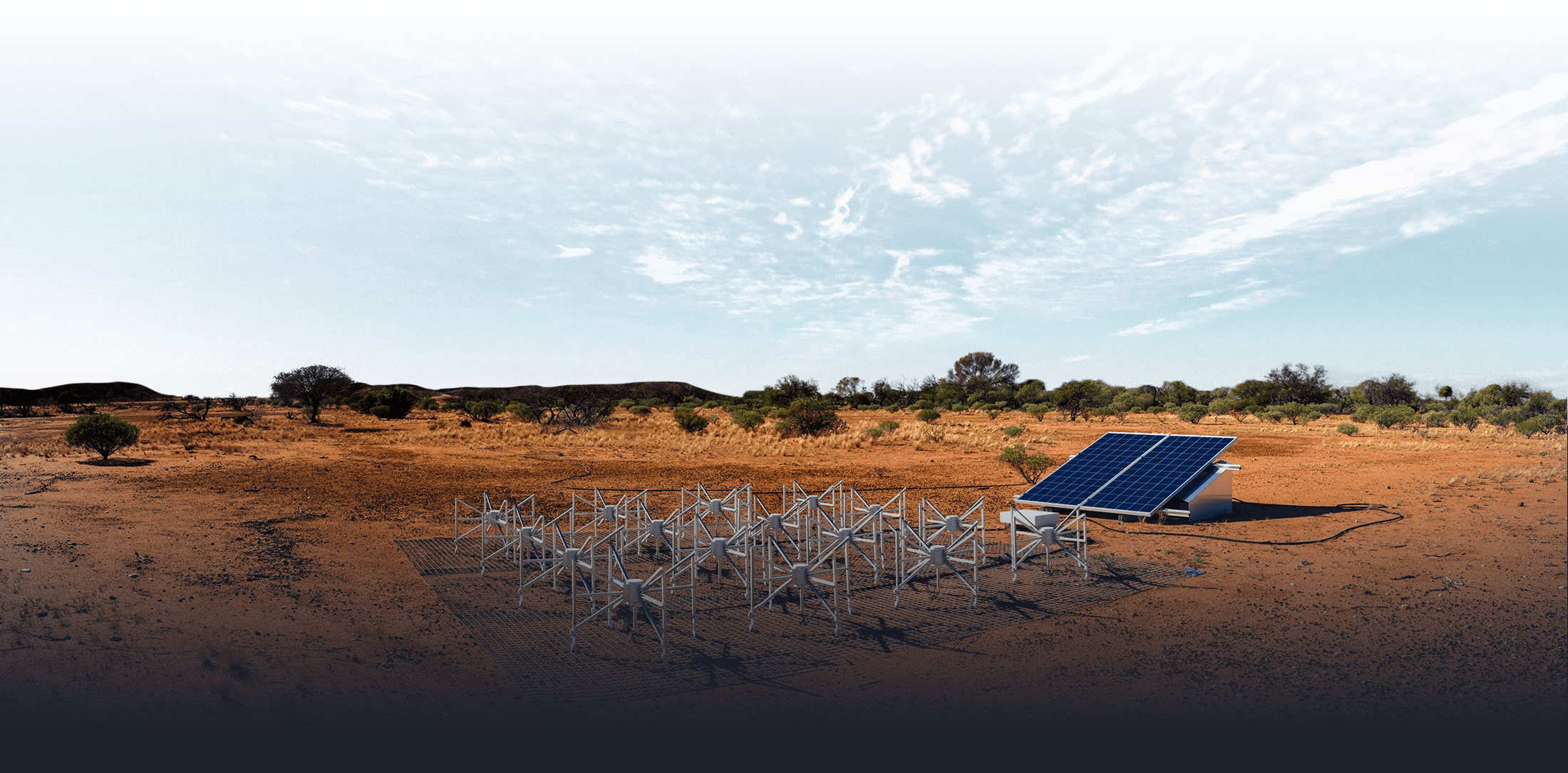Cosmic rays are high-energy particles – mostly protons and atomic nuclei – bombarding the Earth from outside our solar system. The best candidate for the origin – supernova remnants – can’t explain the highest-energy cosmic rays, which can reach 1020 eV, more than 10 million times the energy of particles produced at the Large Hadron Collider.
In 1965, it was discovered that cosmic ray extensive air showers (EAS – cascades of secondary particles produced by cosmic rays hitting the upper atmosphere) emitted radio-wave radiation. The radiation was known to peak in strength near 50 MHz, and be dominated by interactions between the secondary particles and the Earth’s magnetic field.
It wasn’t until the modern era of digital radio astronomy in the early 2000s however that the LOPES and CODALEMA experiments in Germany and France measured in detail the nanosecond-scale bursts of radio emission produced by cosmic rays.
Advances in the theory of radio emission in 2011 allowed accurate predictions of the complex ground pattern of radio emission. Using particle detectors at ground level to trigger buffered voltage data when a cosmic ray interaction occurred, the Dutch radio telescope LOFAR was able to detect this ground pattern. The dense clustering of LOFAR antennas in the core meant this data provided the most accurate method for measuring certain cosmic ray properties, placing new constraints on the cosmic ray spectrum, and thereby the cosmic ray origin.
Understanding cosmic ray radio emission however requires simultaneously modelling particle interactions at energies that cannot be studied in a laboratory, and solving for the spectrum of primary cosmic rays themselves. To untangle these uncertainties requires a better resolution on the structure of cosmic ray cascades, which necessarily means moving to frequencies above the 50 MHz at which radio emission is coherent over their entire length.
“The Murchison Widefield Array offers the best chance of such improved resolution.”
Ideas for cosmic ray detection at the MWA began as early as 2010, as an offshoot of the LUNASKA project that looked for even higher-energy particles hitting the Moon. However, it was not until the formation of the SKA’s High Energy Cosmic Particles Focus Group in 2015 that momentum began to build for the project.
A team of researchers led by Dr Clancy James (ICRAR/Curtin) and Dr Justin Bray (U. Manchester, UK), have collaborated with the MWA Operations Team to build, test, and deploy a prototype radio-quiet particle detector in the MWA core region in November 2018.
Affectionately known as the ‘pizza box’, the detector uses silicon photomultipliers to detect light from cosmic ray secondary particles passing through a block of plastic scintillator. The detector runs at low voltages, and passed all requisite RFI checks at the Curtin anechoic chamber. Simulations by an ICRAR summer student, Jesse Schelfhout, have shown it is detecting cosmic ray muons at the expected rate. A planned array of 8 such detectors will allow the rapid identification of energetic cosmic ray cascades to trigger the capture of MWA voltages.
Simultaneously, a PhD student, Mr Alex Williamson, has been investigating how to use MWA data to study cosmic ray signals. The Pulsar group have already developed a pipeline to convert fine channel data (20kHz, resolution) from the Voltage Capture System back to coarse channel resolution (1.28 MHz, ). Supervised by Prof. Steven Tingay and Dr. Clancy James, Alex has developed a fast code to synthesise the MWA coarse filterbank and obtain data at the full time resolution provided by the bandwidth. The resolution can be up to 27 ns for the maximum 24 1.28 MHz coarse channels.
The goal is to use the higher resolution afforded by the MWA core to determine the longitudinal structure of cosmic ray cascades. In particular, interference between the emission mechanisms (geomagnetic and Askaryan mechanisms) is expected to encode new information via the changing polarization structure of the radio ground pattern. Studies of this structure will inform high-energy particle physics models, and models of cosmic ray sources both within and beyond the Milky Way.











